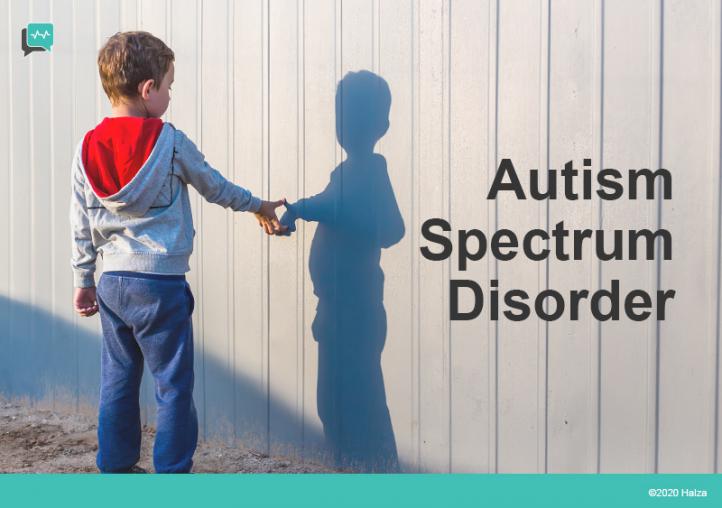Autism Spectrum Disorder – Everything You Need to Know

An often-repeated quote in the autism community is:
“If you’ve met one person with autism, you’ve met one person with autism.”
However, there are some basic needs that people with autism share with one another and with everyone else: feeling safe and feeling a sense of belonging with others. When people are regularly misunderstood, as is common in autism, these two important needs are not well met.
By understanding what autism is – and isn’t – you can avoid misunderstandings and ultimately develop valuable relationships.
What Is Autism, And Why Are People “On the Spectrum”?
The terms “autism” and “on the spectrum” refer to “Autism Spectrum Disorder” (ASD). ASD is a group of disorders that cause repetitive behaviors and difficulty with social interaction and communication.
Symptoms of ASD can range from very mild (formerly known as “Asperger syndrome”) to extremely severe. Mild ASD might remain undiagnosed. Moderate to severe ASD can cause an inability to live alone or to function without assistance.

ASD is often diagnosed when a child is one to two years old. Around that time, parents or a physician might first notice that a child does not seem interested in social interaction and is having difficulty with verbal and/or non-verbal communication.
What Causes Autism Spectrum Disorder?
Unfortunately, science does not yet have a definitive answer to this question. Most scientists agree that ASD is at least partly caused by genetic factors, environmental factors, or a combination of both.
A few risk factors that have been suggested include older parental age, having an older sibling with autism, and being born with Fragile X syndrome, Down syndrome, tuberous sclerosis, or one of several other medical conditions.
The age range at diagnosis overlaps with the time when several childhood vaccinations are given. It is important to know that the overlap is only because symptoms of ASD become noticeable at that age.
There is absolutely no connection between vaccinations and ASD.
Are People with ASD Less Intelligent?
Almost half of all people with ASD have average or above-average intelligence. However, they can have unusual speech patterns, difficulty putting thoughts into words, or unusual behavior in social situations. This can make people with ASD appear to be less intelligent than they actually are.

What Is It Like to Have ASD?
Although there is a wide range in the severity of symptoms, all people diagnosed with ASD must have two things in common:
1) a deficit in social interaction skills, and
2) repetitive behaviors
Social interaction skills that are difficult for persons with Autism Spectrum Disorder include:
- Interpreting facial expressions
- Recognizing social cues
- Interpreting non-verbal body communication
- Understanding what other people are feeling
- Recognizing underlying meanings in conversation
- Maintaining relationships.

Of course, every individual is unique. However, because of these difficulties, you might notice that a person with ASD:
- Ignores you when you call their name.
- Doesn’t make eye contact or even look at you when you are speaking.
- Talks about their own interests but does not ask about yours.
- Does not figure out situationally appropriate behavior – for example, waiting for their turn to board a bus.
- Is puzzled by another person’s reaction to something that is said, particularly if that reaction is different from the expected reaction.
- Turns and walks away in the middle of a conversation.
- Does not recognize signs of someone else’s anger, sadness, or boredom
- Interprets words exactly as they are spoken; does not understand sarcasm or irony.
Repetitive behaviors might include:
- Needing to follow the same daily routines
- Wanting things done exactly the same way each time.
- Talking almost exclusively about one or a few particular topics
- Eating the same foods every day.
- Carefully organizing and re-organizing objects into specific categories or locations.
As you might expect, social or workplace situations can feel overwhelming for people with ASD. In addition to difficulty “reading” a social situation, people with ASD might also struggle to regulate their emotions. They might be extremely sensitive to light, sounds, crowds, touch, and smells. This combination can lead to emotional overload and a “meltdown” in public places. Sometimes the person completely shuts down instead.
Why Do People with Autism Spectrum Disorder Fidget or Talk To Themselves?
Actions such as rocking, hand flapping, fidgeting with a specific object, or repeating chosen words or phrases are commonly known as “stimming”. ‘Stimming’ stands for “self-stimulating” behaviors that can calm a person with ASD. Stimming is usually done when someone is feeling heightened emotion, either positive or negative.
What Other Characteristics Are Associated With ASD?
These differ from person to person, but might include:
- Language delays: Many children with autism experience language delays. Others might fully understand language, but have difficulty having a typical back-and-forth conversation. Some have a robotic-sounding voice or speak in a monotone.
- Difficulty with executive functions: Executive functions include the ability to prioritize, to plan, stay focused, and to inhibit inappropriate behaviors.
- Medical issues: These often include gastrointestinal disorders, epilepsy, or Fragile X syndrome (an inherited disorder resulting in intellectual and developmental disabilities, and certain medical conditions).
- Psychiatric conditions including anxiety disorders, depression, and obsessive-compulsive disorder.
- Stiff or unusual gaits or body language.
How Can I Best Communicate or Work with A Person With ASD?
The most important thing is to remember to treat a person with Autism Spectrum Disorder with the same respect that you would treat anyone else.
Also, remember that everyone with ASD is different. Adjust your reactions accordingly. Follow their lead in shaking hands or making eye contact. If they don’t, you shouldn’t either.
Here are some tips.
1) Find a quiet area for speaking so that they can focus on the conversation.
If you are with someone and a ‘meltdown’ occurs, help them get somewhere calmer or more private. Ask if they want to take your hand, or if appropriate, if they want a hug. Don’t criticize their behavior – they can’t help it.
2) In conversation, be patient and don’t try to fill in words for the person. Sometimes they take longer to express themselves.
3) Use clear, specific, and direct language.
People with ASD tend to be more comfortable when they don’t have to figure out the underlying meaning of a sentence. “We’re going to the movies later. Do you want to go?” leaves a lot of open questions.
Instead, you can say “Joe and I are going to the new movie at 3 pm. Would you like to come with us? I am driving and there is room in my car for you.”
4) Remember that people with ASD have a hard time understanding the ‘rules’ of socializing that most of us take for granted. They might seem rude at times because they might not know how to start or end a conversation.
5) Guide the next step in a social situation.
You might need to be more direct than you would otherwise be. For example, at a dinner party, you might say “You have just taught me so much about our transit system. Now we must find our seats – they are about to serve dinner”.
6) Accept stimming as a normal part of the person with ASD.
If they are stimming, try to pick up on their emotion – smile if they seem happy or ask if they are ok if they look distressed.
7) Some people with ASD don’t like to be touched.
Don’t assume that everyone is ok with a friendly shoulder tap or a hug when saying hello or goodbye. Ask first.
8) People with autism tend to prefer structure, organization, and routine.
They might become upset if things that they have arranged are moved around, or if schedules change unexpectedly. When planning activities or responsibilities, give plenty of warning and act as a source of support when changes occur.
9) Several popular books and films have portrayed people with autism. Remember that everyone is different, and the person you are with probably has very little in common with a character in a book or film.
Is Autism Spectrum Disorder Common?

In the U.S. approximately 1 in 59 children have ASD, and approximately 75% of them are boys.
Worldwide, fewer children are known to have ASD, but that is most likely because not all countries routinely diagnose and report it. Women tend to be diagnosed later, in part because learning to mimic other girls and ‘blend in’ with the group is more important to them than it is to boys.
Related reading:
Some – but not all – children show improvement in communication and social skills as they grow older. Therapeutic programs can be very helpful to children who have access to them.
How to Make A Difference
It is easy for socially outgoing people to dismiss someone who does not seem interested in interacting. But many people with ASD don’t encourage social interaction in part because they know that they don’t entirely understand it. Many people on the spectrum do want to interact – even if only on their terms.
By understanding some of the differences you might see in a person with ASD you can help them to feel accepted and valued. The benefits to both of you can be enormous.
How Halza Helps
Manage you and your family’s health easily with the Halza app!
Store, track & share all of your child’s medical records to have them with you, wherever you go. Monitor your child’s growth and vaccination schedule as well as upload reports and doctor’s notes all with the Halza app. QuickShare a complete overview of you or your child’s health with any attending doctor in seconds, during emergencies or whenever you need.
Simplify your health journey and download Halza now!
Sources: WHO – CDC – Autism Speaks – Autism Society

